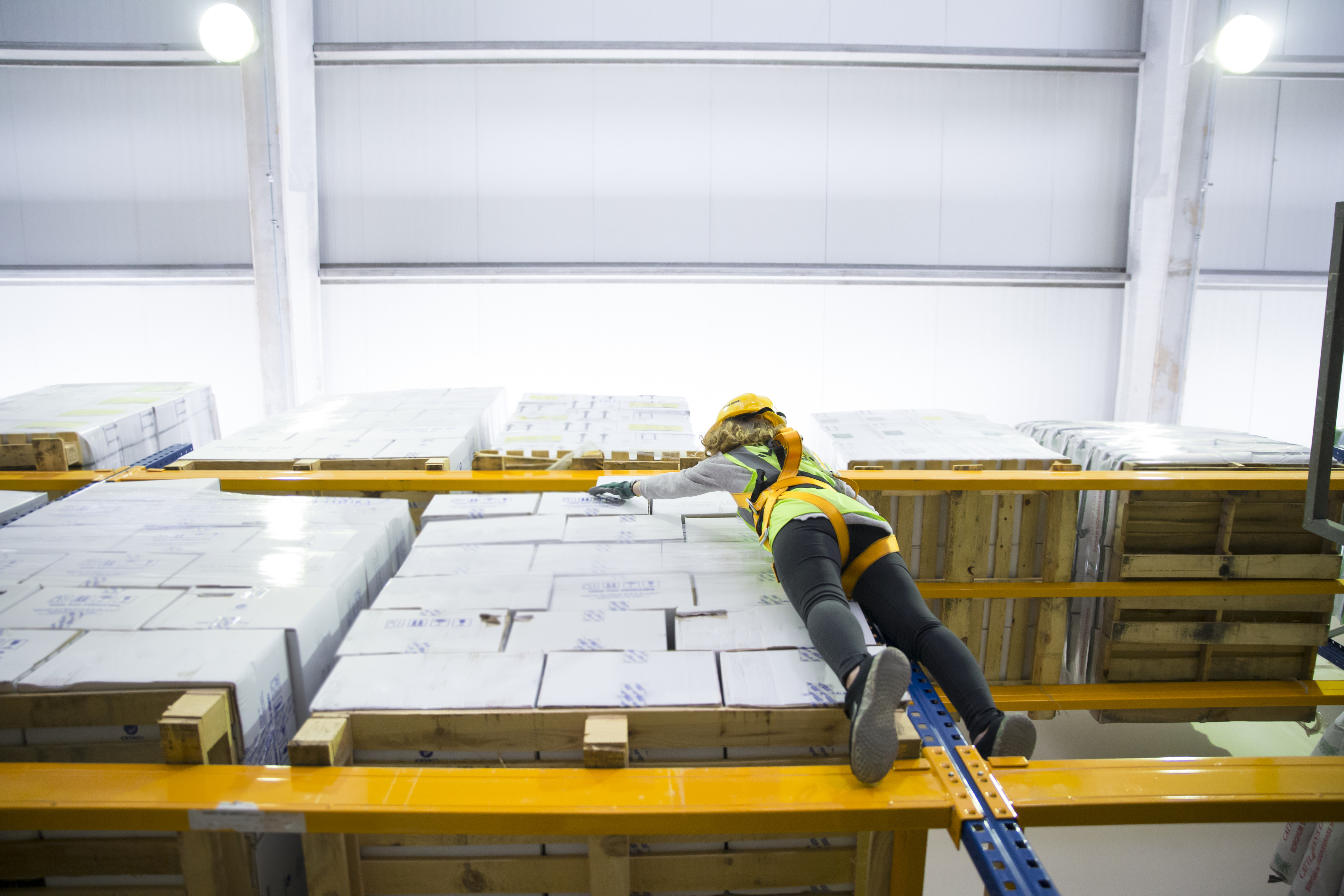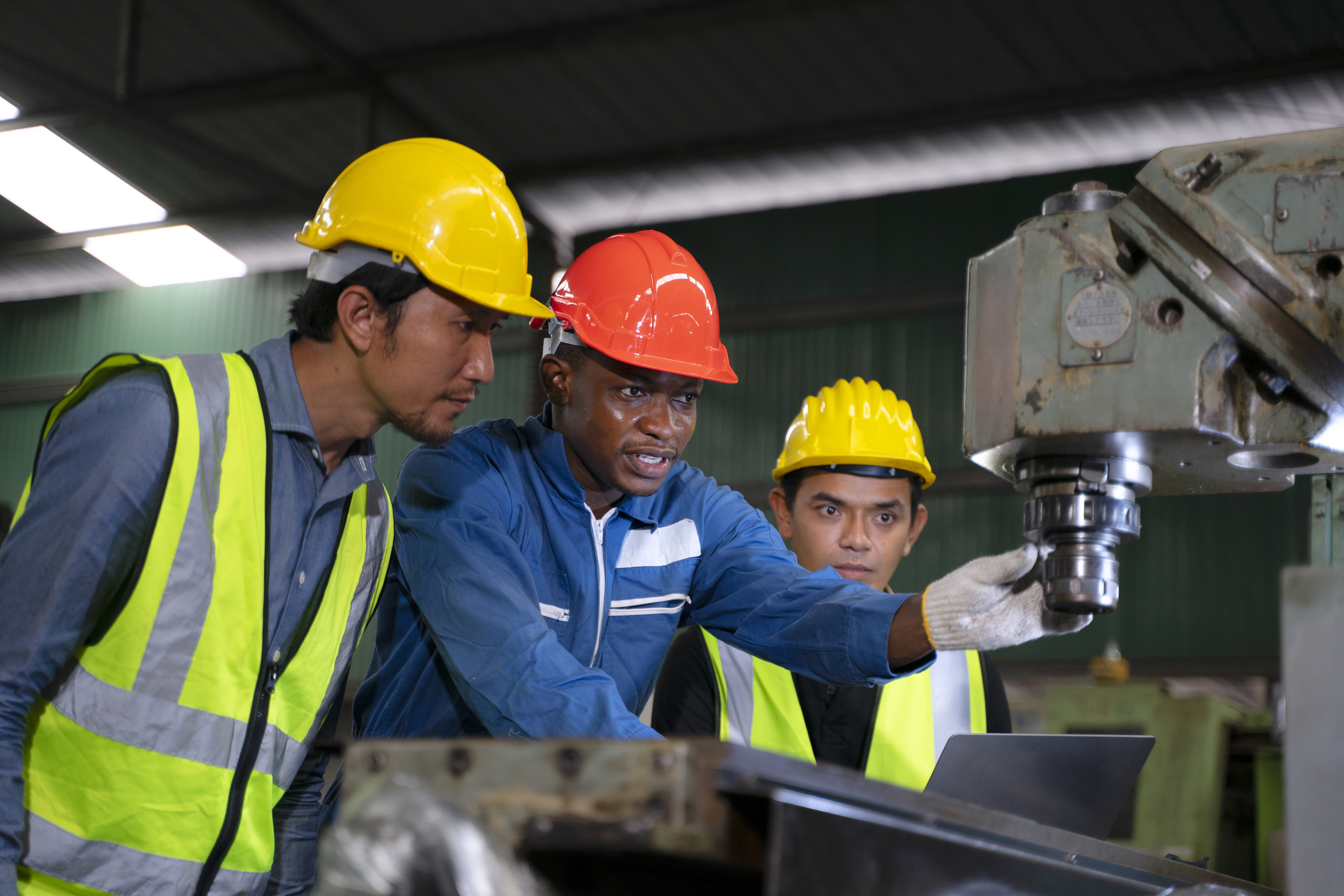The Moment
Stress was affecting everyone at the plant on the day of the accident. People were cranky and on edge. Both the Manager and the Supervisor had called Jason twice that morning, asking if he could catch up on his daily production quota. He didn't need those calls. He knew his goals and what he had to do to meet them. Not only did he hear about them every day during morning meetings, but they were the single metric posted all over the plant. He saw them in the break room. He saw them in the control room. He saw them in the lockers. They were the unavoidable announcement to everyone of his worth as an operator. When the numbers were up, then so was his mood. When they were down, it chewed him up inside. So, no. He didn't need the calls.

He had plenty of reasons to meet his goals. He and the team were proud of their work and enjoyed the recognition when they hit production milestones. They worked hard to get there. Last year, they were so understaffed that they needed 20 mandatory overtime days just to hit aggressive targets. It was a difficult and exhausting year, but they made it happen. They saved the year and got their bonus.
They got paid well for being the site's production heroes. He also liked being relied upon. But there were others that needed him as well. Jason had a three-year-old son, and all the extra hours at the plant stole time away from him. He had missed his kid's first steps during that overtime. Bonus pay is great, but it won't rewind the clock.
The worst part is that he really wasn't there even when he was home. He'd work through an extra shift on Saturday, get home exhausted, sleep the best part of Sunday, and then get up early for work again on Monday. You rinse and repeat that cycle for too many weeks in a row, and your kid's life will pass you by while you make boxes in a factory. And for that reason, he did everything he could to meet the quota. Hitting targets didn't just mean a year-end bonus. It meant avoiding overtime and more trips to the park with his son.
Fortunately, in this plant, people pulled their weight. Nobody wanted to be the reason everyone missed out on the bonus or personal time. And if you slacked, you'd hear it from the team. Slow workers got pushed hard and didn't stay slow for long. They either picked up the pace, or they left. Plain and simple. So, the people were rarely the problem. The machines were a different story.
They were off-target by a lot on the day of the accident. As a result, they were running themselves and the equipment harder than they should. One of the splicers was down, so they were playing catch-up with the others. All of them were overdue for some maintenance. But taking them offline to work on was not an option. Not this week. Who wants to be the guy who stops production when everyone is breaking their backs to barely catch up?
So, he was cutting corners like the rest of them. That was common on days like today. He knew safety was important. There were dozens of posters with that message covering the plant like wallpaper. But this was the company's most important production facility. Corporate made that message clear and often. Maintaining that level of performance meant that sometimes risks would have to be taken. On days like this, there was an unspoken agreement with management that they might look the other way on certain things. Of course, they would never say something like this outright. But the lack of leadership presence on the floor–with their supervisors stuck in meetings all day–spoke volumes. They trust employees will do what it takes to hit their numbers.

He wasn't an idiot about it, though. He knew what he was doing. He was the most experienced operator out there, and he'd never been seriously hurt. He knew the equipment was dangerous from day one. "These machines will eat you up if you're not careful." That's the first thing his first supervisor told him when he was a junior apprentice 20 years ago. He remembered it like it was yesterday. He let the words linger for a moment before shaking them off. He needed to get those belts up and running again.
Jason often finds himself revisiting that day and moment when everything changed. Our days are given shape by countless decisions, most of which will fade from memory. But occasionally, we make a choice that will separate our lives into distinct periods of the "before" and "after." Those are the ones we will never forget.
The path he chose that day was one of those moments. It all started when the trench pit jammed up with cardboard scrap. The choice he should have made was to hit the emergency stop switch, go through a lock-out-tag-out, and clear the jam. But that is not what he chose. That would have slowed down production. Instead, he did something he had done thousands of times before and never got hurt. He reached in with his right arm while the conveyor belt was still moving. He grabbed the cardboard causing the jam and tried dislodging it. That's when he felt the unyielding pull on his arm.
"These machines will eat you up," he heard again, only this time the memory had a very different tone. This time, it was dark and frantic. This time, he thought about his son. This time, it was accompanied by pain and the certainty that their lives were about to change as several hundred pounds of unforgiving pressure began crushing his right arm.
Even though Jason's story is fiction, if you work in a high-hazard environment, you know that stories like these are common. When one investigates them with the depth and precision that the science of behavior provides, it becomes clear that people don't engage in at-risk behavior because they're lazy, irresponsible, or complacent. Those are useless labels that fail to explain the root cause of their decisions. To understand why those choices are made, one needs to look at the context in which the behavior occurred.
- Are there personal issues negatively influencing an employee's performance?
- Are employee interactions with peers and leadership encouraging or discouraging safe behavior?
- How has this behavior, or something like it, been incentivized or reinforced deliberately or inadvertently?
- Do the organizational processes and systems encourage or discourage safe practices?
In Death in the Afternoon, Ernest Hemingway said, "The dignity of movement of an iceberg is due to only one-eighth of it being above water." The incident and the at-risk behavior are only the tip of the iceberg in these events. To begin addressing the problem, one needs to look beyond these outcomes and find the behavioral root cause. One needs to look at the environment and sources of motivation influencing behavior.
For that reason, when analyzing organizational performance, leadership teams need to be more observant of their leadership practices and how they affect their employees. Leaders select and operationalize the corporate values and systems everyone works under. They provide the processes, direction, training, resources, incentives, and feedback for employees' work.

Simply put, leadership teams are responsible for the framework that supports how and why employees do their work. When performance moves in the right direction, leaders should assess what they're doing that's contributing to that trend. When it doesn't, they should do the same.
The objective of this article isn't to take responsibility and agency away from a person's personal safety. People will always make their own choices. But they will do so in response to the context you've set up as a leadership team.
Our days are filled with moments where we need to make a choice. These range from the shirt we're going to wear to decisions that will change the direction of our relationships, health, and careers. Sometimes, we exercise self-control. Self-control is when we choose the option that takes more time and effort now but will benefit us significantly later. We may enroll in a difficult educational program, stick to our diet in the face of temptations, or accept the call to a challenging project or journey. We do the hard things now and reap the rewards later.
Other times, we're more impulsive and choose behaviors that feel good at the moment but could eventually become detrimental or even dangerous. We hit the snooze button and skip the workout, opt out of having that difficult but necessary conversation with a friend, or wear comfortable sandals instead of lacing up the heavy steel-toe boots when mowing the lawn.
The science of behavior provides us with principles to better understand ourselves and our sources of motivation during these times. More importantly, we can take that information to implement measures that strengthen our self-control when tempted to take an easier but, eventually, self-defeating path. In other words, we can arrange a context that makes self-control more likely.
We can apply the same principles and tools to create environments and performance frameworks that support safe behavior among our workforce. When employees are at a juncture where they can select the safe behavior or cut a corner; the organizational context you've arranged as a leader can make all the difference in the path they choose. Doing this deliberately and with an understanding of human behavior is critical for leaders in high-hazard environments because employee choices there will often have the highest stakes possible.


